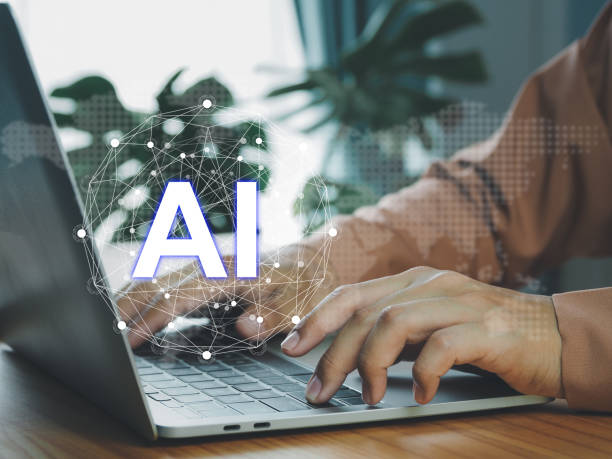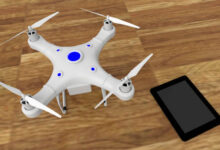
The manufacturing industry has undergone a profound transformation in recent years, thanks to the integration of Artificial Intelligence (AI) in various aspects of production.
AI-driven automation has revolutionised manufacturing processes, empowering businesses to achieve unprecedented levels of efficiency, productivity, and innovation.
In this blog post, we delve into the exciting world of AI-driven automation in manufacturing and explore how this cutting-edge technology is reshaping the future of industry.
Robotics and AI

The convergence of robotics and AI has paved the way for highly efficient and adaptive assembly lines in manufacturing.
According to AI Business, AI-powered robots are equipped with advanced sensors and machine learning capabilities, enabling them to perform complex tasks with precision and speed.
These robots can collaborate with human workers, taking on repetitive and physically demanding tasks, while humans focus on more strategic and creative roles.
The result is an optimised production process that reduces errors, improves quality, and accelerates time-to-market for products.
AI-driven robotics also facilitate seamless integration between various production stages, allowing manufacturers to achieve greater synchronisation and responsiveness in their supply chain.
Predictive Maintenance
Unplanned equipment downtime can be a significant challenge in manufacturing.
However, AI-driven predictive maintenance has emerged as a game-changer in minimising downtime and maximising machinery uptime.
By leveraging IoT sensors and AI analytics, manufacturers can monitor equipment performance in real-time, detecting early signs of potential failures.
Predictive algorithms analyse data patterns and identify anomalies, allowing maintenance teams to intervene before a breakdown occurs.
This proactive approach to maintenance not only reduces repair costs but also extends the lifespan of machinery, optimising capital investments and enhancing overall operational efficiency.
Quality Control and Defect Detection
Ensuring product quality is critical for manufacturers to maintain a competitive edge in the market. AI-driven automation enables advanced quality control measures and defect detection.
Computer vision technology, powered by AI algorithms, can inspect products with unparalleled accuracy, identifying even the tiniest defects that may escape human detection.
This level of precision reduces the risk of delivering faulty products to customers, thereby preserving brand reputation and customer satisfaction.
Manufacturers can also use AI to analyse quality data and identify root causes of defects, enabling continuous improvement in product design and manufacturing processes.
Supply Chain Optimization
The complexity of modern supply chains demands intelligent management to enhance efficiency and minimise disruptions.
AI-driven automation plays a crucial role in supply chain optimization.
Decrypt says AI algorithms can analyse vast amounts of data from different sources, including supplier performance, demand forecasts, and logistics information.
With this knowledge, manufacturers can make informed decisions about inventory levels, order fulfilment, and transportation routes.
By optimising the supply chain, manufacturers can reduce lead times, cut costs, and respond swiftly to changing market demands, ultimately gaining a competitive advantage.
AI and Human Collaboration
Contrary to the misconception that AI will replace human workers, AI-driven automation works in tandem with human expertise, augmenting the workforce’s capabilities.
AI systems handle repetitive and data-intensive tasks, freeing up human workers to focus on more strategic and creative endeavours.
This collaboration enhances employee job satisfaction and enables manufacturers to tap into their workforce’s full potential.
Furthermore, AI can assist workers by providing real-time insights and recommendations, empowering them to make well-informed decisions that improve overall operational efficiency.
Enhanced Product Design and Innovation
AI’s ability to analyse vast datasets and identify patterns gives manufacturers a competitive advantage in product design and innovation.
With AI-generated insights, manufacturers can identify customer preferences, market trends, and emerging demands, guiding the development of new products that resonate with consumers.
AI-powered design tools also aid in rapid prototyping and simulations, shortening the product development lifecycle and reducing time-to-market.
By leveraging AI creativity, manufacturers can stay ahead in a fast-paced, ever-changing industry and meet evolving customer needs.
Data Security and Privacy
As AI-driven automation becomes more prevalent in manufacturing, ensuring data security and privacy becomes paramount.
IBM cited that manufacturers must implement robust cybersecurity measures to protect sensitive production data and intellectual property.
This includes encrypted communication channels, access controls, and continuous monitoring of the manufacturing network for potential threats.
Moreover, AI-powered systems should adhere to privacy regulations and ethical guidelines, ensuring that customer and employee data remains confidential and protected from misuse.
How does AI-driven automation revolutionise manufacturing processes?
AI-driven automation revolutionises manufacturing by streamlining production, reducing errors, optimising supply chains, and enabling predictive maintenance for increased efficiency.
What benefits does AI-driven automation offer to manufacturers?
AI-driven automation offers benefits such as improved productivity, cost savings, better quality control, and faster time-to-market for products.
Can AI replace human workers in manufacturing?
AI-driven automation complements human workers rather than replacing them. It empowers workers with data-driven insights, allowing them to focus on complex tasks and creativity.
What challenges may arise with AI implementation in manufacturing?
Challenges include initial setup costs, data security concerns, workforce upskilling, and integrating AI into existing manufacturing systems.
Conclusion
AI-driven automation has ushered in a new era of possibilities for the manufacturing industry, enhancing efficiency, quality, and innovation.
The marriage of AI and robotics streamlines assembly lines, while predictive maintenance prevents costly downtime.
Advanced quality control measures and supply chain optimization ensure flawless products and streamlined operations.
Far from replacing human workers, AI collaborates with them, augmenting their capabilities and driving creativity.
AI’s analytical prowess fuels product design and innovation, while robust data security and privacy measures safeguard manufacturing operations.
As manufacturers continue to embrace AI-driven automation, they unlock untapped potential, positioning themselves as trailblazers in the rapidly evolving landscape of modern industry.
Embracing this transformative technology is not just a choice but a necessity for those seeking to thrive and lead in the dynamic world of manufacturing.








